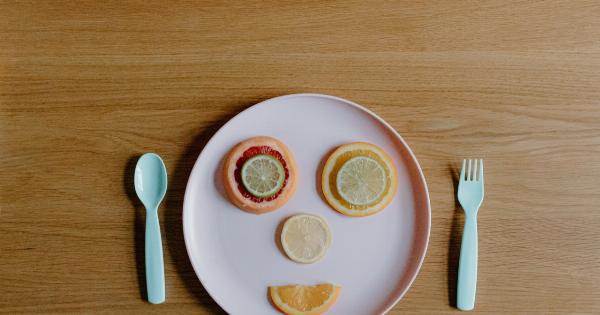Have you ever wondered if your face could reveal clues about your nutritional status? Facial analysis, an ancient practice that has gained recognition in the modern era, suggests that certain facial features can provide insights into our overall health and well-being. By examining specific facial characteristics, such as skin condition, facial contours, and even the presence of certain lines and wrinkles, it’s possible to identify potential nutrient deficiencies and imbalances.
In this article, we will delve into the fascinating world of facial analysis and explore the connections between your face and your nutritional status.
The Link Between Facial Features and Nutrient Deficiencies
It is said that our faces hold many secrets, including signs of nutrient deficiencies. Facial analysis focuses on various aspects of our face to assess our nutritional status and overall health.
Here are a few key facial features that can indicate potential nutrient imbalances:.
H2 Heading
One of the most noticeable facial features linked to nutritional status is the skin. Our skin serves as a reflection of our internal health, and certain skin conditions can be indicative of specific nutrient deficiencies.
For instance, dry and flaky skin may signify a deficiency in essential fatty acids, while pale or yellowish skin could be a sign of anemia or low iron levels. Similarly, bumpy or rough skin may indicate a lack of vitamins A or C.
H2 Heading
Facial contours also play a crucial role in facial analysis. The distribution of fat and muscle in our face can reveal valuable information about our nutritional status.
An excessively round face can point to overconsumption of carbohydrates, especially refined sugars. Conversely, a sunken or hollow appearance may suggest a deficiency in healthy fats or protein.
H2 Heading
Furthermore, the presence of certain lines and wrinkles can offer insights into our nutrient status. For example, dry and wrinkled skin can result from inadequate hydration or insufficient intake of vitamins B and E.
Additionally, premature aging signs, such as deep wrinkles or fine lines, may be associated with an imbalance in antioxidants like vitamins C and E or minerals like selenium or zinc.
H2 Heading
Other facial features that can contribute to nutritional analysis include the color and condition of the lips and the appearance of the eyes. Pale or cracked lips may indicate a deficiency in B vitamins, iron, or essential fatty acids.
Bloodshot or dry eyes could be a sign of insufficient hydration, omega-3 fatty acids, or vitamins A and C.
H2 Heading
While facial analysis can provide valuable clues about our nutritional status, it’s important to note that these indicators are not definitive proof of deficiencies.
It is always wise to consult with a healthcare professional or registered dietitian for a comprehensive assessment and guidance based on your unique circumstances.
Improving Nutritional Status Through Diet
If your facial analysis suggests potential nutrient deficiencies, you can take proactive steps to improve your diet and optimize your nutritional status. Here are a few dietary changes that can support overall well-being:.
H2 Heading
1. Eat a Balanced Diet: Aim to consume a variety of whole foods, including fruits, vegetables, lean proteins, whole grains, and healthy fats. This will ensure you receive a wide range of essential nutrients.
H2 Heading
2. Hydrate Well: Proper hydration is crucial for maintaining healthy skin and overall well-being. Drink an adequate amount of water throughout the day, and consider incorporating hydrating foods like cucumbers, watermelon, and oranges into your diet.
H2 Heading
3. Consider Supplements: If you have identified specific nutrient deficiencies, dietary supplements can be a helpful addition to your routine. However, always consult with a healthcare professional before starting any new supplements.
H2 Heading
4. Opt for Nutrient-Dense Foods: Emphasize nutrient-dense foods that pack a punch in terms of vitamins, minerals, and antioxidants. Include foods like leafy greens, colorful fruits and vegetables, nuts, seeds, and fish rich in omega-3 fatty acids.
H2 Heading
5. Get Regular Physical Activity: Engaging in regular exercise and staying physically active enhances overall well-being and can also contribute to healthy skin. Strive for at least 150 minutes of moderate-intensity exercise each week.
H2 Heading
6. Manage Stress Levels: Chronic stress can negatively impact our nutritional status and overall health. Incorporate stress management techniques like meditation, yoga, or regular relaxation practices into your routine.
H2 Heading
Remember, facial analysis offers valuable insights, but it should never replace a professional medical assessment.
If you suspect nutrient deficiencies or have concerns about your overall health, consult with a qualified healthcare practitioner for personalized guidance.



























